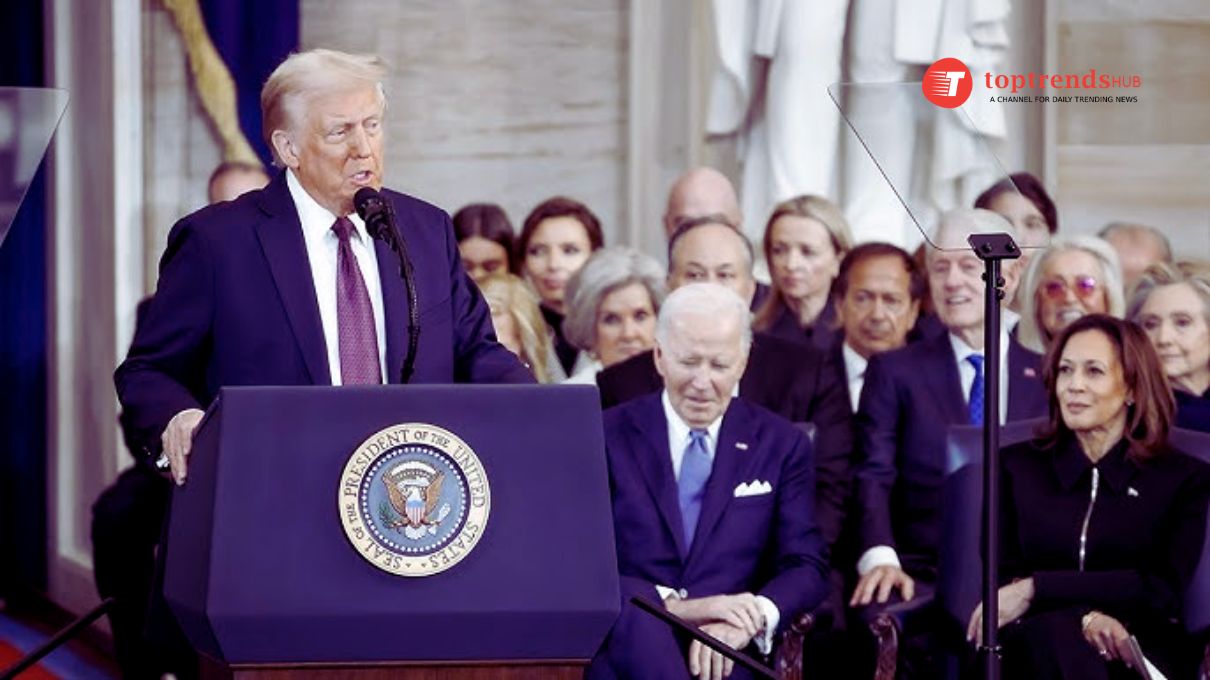Washington, D.C. – On Monday morning, Donald Trump was sworn in as the 47th President of the United States, marking the beginning of his second term with a commanding return to power. Donald Trump’s Second Term wasted no time in setting the tone for his administration, quickly rolling out initiatives and re-establishing his presence in the White House.
After a ceremonious oath-taking, Trump launched into action, signing numerous executive orders, making high-profile appointments, and outlining his agenda. With Republican lawmakers at work to advance his policies, Washington is preparing for an intense legislative season.
Swift Action on Cabinet Appointments
Trump’s administration began taking shape immediately after his swearing-in. Among his first major achievements was the swift confirmation of Marco Rubio as Secretary of State. Confirmed unanimously by the Senate on the same day, Rubio’s appointment signals a proactive approach to foreign policy, emphasizing a “peace-through-strength” philosophy.
Speaking after his confirmation, Rubio addressed the ongoing war in Ukraine, calling for a resolution but acknowledging the complexities of global diplomacy. “Russia is the aggressor, but this war needs to end,” Rubio said. “In foreign policy, decisions often come down to choosing the least harmful path.”
While Rubio’s confirmation was met with bipartisan support, other Cabinet picks face more scrutiny. Pete Hegseth, nominated for Secretary of Defense, has drawn criticism over allegations of misconduct and financial mismanagement. Despite Democratic opposition, Republicans appear poised to confirm him, with Senate Armed Services Committee Chair Roger Wicker defending the nomination as an opportunity to “shake things up in the Pentagon.”
Other notable nominees include Robert F. Kennedy Jr. for Secretary of Health and Human Services and Tulsi Gabbard for Director of National Intelligence. Both are expected to face rigorous questioning in their confirmation hearings.
Executive Orders Set the Agenda
President Trump wasted no time utilizing executive orders to enact his priorities. On his first day in office, Donald Trump’s Second Term
- Froze federal hiring to reassert control over government operations.
- Rescinded 78 executive orders signed by former President Joe Biden.
- Officially withdrew the United States from the Paris Climate Agreement.
- Issued orders to prevent “government censorship of free speech” and limit the “weaponization of government.”
In a highly controversial move, Trump pardoned approximately 1,500 individuals charged with crimes related to the January 6, 2021, Capitol riot. Additionally, he declared a national emergency at the southern border, restricted birthright citizenship, and designated drug cartels as “foreign terrorist organizations.”
Trump’s inaugural speech reiterated his focus on protecting American interests. “We will overhaul our trade system to benefit American workers and families,” he declared, signaling future tariffs on foreign trade partners such as China, Mexico, and Canada.

Legislative Priorities for the GOP
With Republicans holding thin majorities in both chambers of Congress, the legislative agenda is already taking shape.
- Strengthening border security with stricter immigration laws.
- Boosting domestic energy production.
- Extending and expanding the 2017 tax reforms.
- Cutting federal regulations introduced during Biden’s presidency.
Senate Majority Leader John Thune emphasized the party’s commitment to delivering results. “Our focus is on securing the border, building a stronger military, and providing tax relief for American families,” he said during the inaugural luncheon.
However, intra-party disagreements over strategy pose challenges. While the House favors bundling the agenda into a single bill, Senate leaders advocate for dividing it into two parts—one focused on energy and border security, the other on taxation and fiscal policy.
Adding to the complexity is the looming debt ceiling crisis. With the U.S. set to hit its borrowing limit on Tuesday, Speaker of the House Mike Johnson has proposed raising the ceiling by $1.5 trillion while cutting $2.5 trillion in federal spending. Johnson aims to pass the measure by April, though navigating this political minefield will require careful negotiation.
A Presidency in Motion
In less than 24 hours, Donald Trump’s second term has already brought sweeping changes. From foreign policy decisions to domestic legislative battles, his presidency is poised to redefine the nation’s political landscape.
As Trump embarks on day two, the pace shows no signs of slowing. With executive actions underway and Congress working to solidify his agenda, the coming weeks promise to be pivotal for the nation’s future.




